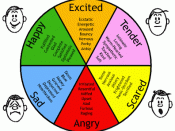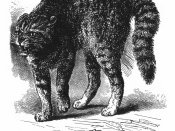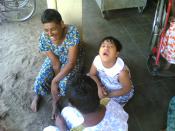University of PhoenixLDR/531February 22, 2010This paper is about creating a plan for positive influence. In this paper the differences in attitudes, emotions, personality, and values will be discussed. In this paper there will be a discussion on how these differences influence behavior. Finally there will be a discussion on how the differences can be effectively implemented into the plan to positively influence the team.
AttitudesRobbins and Judges (2007), states that an attitude shows how individuals feel about something. Attitude is showing your feelings about something or someone. There are three main components of an attitude. These components are behavioral, cognitive, and affective (Robbins, & Judge, 2007, p. 74-75).
BehavioralBehavioral goes along with cognitive and affective. Behavior shows how an individual feels through action. For example, students know plagiarism is wrong so therefore, a behavioral attitude about the subject could be, I will not plagiarize and I will walk away and not be friends with an individual who plagiarize or an individual could take action and report a student who has plagiarized (Robbins & Judge, 2007, p.
74-75).
CognitiveCognitive is stating the obvious, the truth on how one feels. For example, plagiarism is an academic offense. Therefore, those who plagiarize are wrong. This type of attitude is right and it is cognitive (Robbins & Judge, 2007, p. 74-75).
AffectiveAffective goes along with cognitive in stating how and individual feels about a situation. For example, with the plagiarism statement above, an affective attitude would be, I do not like plagiarism and I do not like those who plagiarize. This is showing how an individual affectively feels about plagiarism and those who plagiarize (Robbins & Judge, 2007, p. 74-75).
EmotionsEmotions are a type of feeling that an individual has towards something or someone. Emotions can be shown through how and individual feels when...


